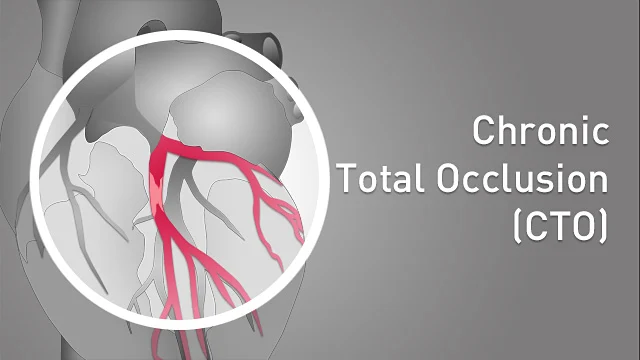
Chronic Total Occlusion (CTO) Angioplasty: Procedure, Techniques, and Outcomes
Chronic total occlusion (CTO) angioplasty is a specialized and challenging procedure used to treat complete blockages in coronary arteries that have persisted for more than three months. These blockages, often due to the buildup of atherosclerotic plaque, prevent blood flow to the heart muscle and can cause symptoms like chest pain (angina), shortness of breath, and even lead to heart attacks.
Indications for CTO Angioplasty
CTO angioplasty is typically recommended for patients who:
- Have persistent and significant symptoms despite optimal medical therapy.
- Have viable heart muscle in the area supplied by the blocked artery.
- Prefer a less invasive approach compared to coronary artery bypass grafting (CABG).
Procedure Overview
- Access and Imaging: The procedure starts with vascular access, usually through the femoral or radial artery. Angiography is performed to visualize the coronary arteries and confirm the location and extent of the occlusion.
- Guidewire Advancement: A guidewire is carefully advanced through the blockage. This step is crucial and can be technically challenging. Various techniques and specialized wires may be used to navigate through the occlusion.
- Balloon Angioplasty: Once the guidewire successfully crosses the occlusion, a balloon catheter is advanced over the wire to the site of the blockage. The balloon is then inflated to open the artery.
- Stenting: Often, a stent (a small, expandable mesh tube) is placed at the site of the blockage to keep the artery open. Drug-eluting stents, which release medication to prevent restenosis (re-narrowing of the artery), are commonly used.
Techniques
Several specialized techniques may be employed during CTO angioplasty:
- Antegrade Approach: The guidewire is advanced from the opening of the artery towards the blockage.
- Retrograde Approach: The guidewire is advanced from a collateral artery on the opposite side of the blockage.
- Hybrid Approach: Combines antegrade and retrograde methods, utilizing whichever approach proves more successful.
Risks and Complications
CTO angioplasty, while generally safe, carries certain risks, including:
- Dissection (tearing) of the artery wall.
- Perforation of the artery.
- Restenosis or re-occlusion of the treated segment.
- Myocardial infarction (heart attack).
- Contrast-induced nephropathy (kidney damage from contrast dye).
Success Rates and Outcomes
The success rates for CTO angioplasty have improved significantly with advancements in technology and techniques, often exceeding 85% in experienced centers. Successful recanalization of CTOs can lead to:
- Relief of angina symptoms.
- Improved heart function and exercise capacity.
- Enhanced quality of life.
Conclusion
CTO angioplasty is a complex but increasingly effective procedure for managing chronic total occlusions in coronary arteries. With proper patient selection and advances in interventional techniques, it offers a promising option for symptomatic relief and improved cardiac function in patients with otherwise challenging coronary artery disease.